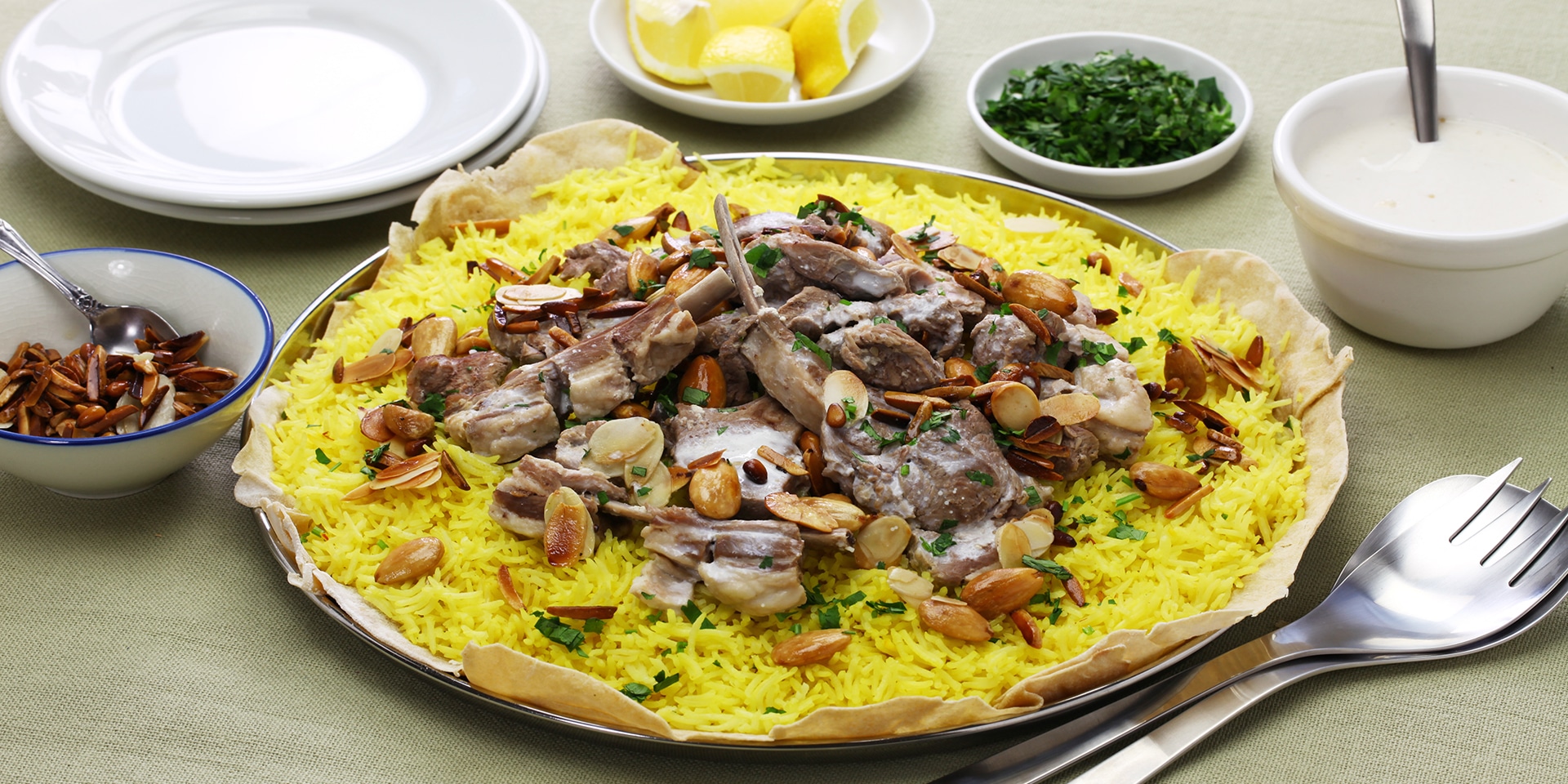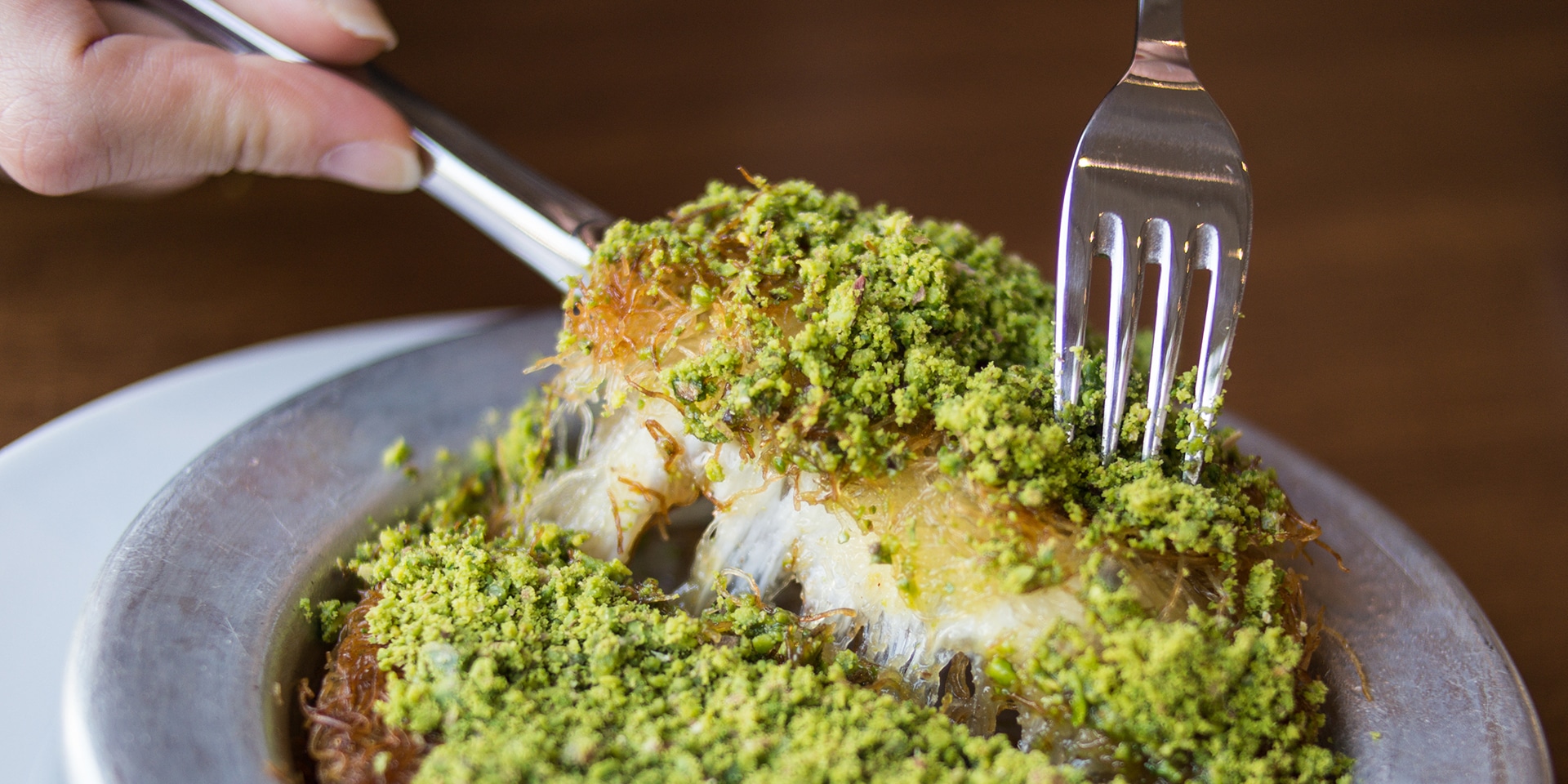
Petra Wadi Rum Roman Ruins Jerash Ruins
In Jordan, meals begin with hosts wishing you, “Sahtain wa afiya,” which means “double your health and well-being,” in the hopes that you may eat with a big appetite. And with good reason: Jordanian dinner tables, marked by abundance, myriad Levantine flavors and overwhelming hospitality, have all the makings of a proper feast that’s sure to leave your heart just as full as your belly.
As is true in the rest of the Middle East, in Jordan, food really is a translation of love; savored slowly through several courses that make their way to the table, some refreshingly light and cold, others steaming, hearty and painstakingly slow-cooked in underground ovens.
Thanks to its location in a region where diverse cultures and culinary traditions have met, mingled and married for centuries, Jordanian cuisine adopts the best of Middle Eastern, Persian, Mediterranean, South Asian and North African influences while also drawing heavily from its rich, desert-born Bedouin heritage.
Here are five must-try Jordanian foods and where to try them in Amman.
Fattet Hummus and Stuffed Falafel
Meals begin with meze, that delightful feature of Levantine cuisine that elsewhere would be considered a feast in its own right but in Jordan does the job of working your appetite up for the main affair.
Meze is an assortment of hot and cold appetizers, pleasantly varied in flavor, texture and taste, served with warm bread.
Perhaps the most delightful element of meze is hummus, a much-loved, creamy chickpea dip you’d also find in the rest of the Middle East, which has crossed regional borders to achieve international fame.
It’s worth trying the Jordanian variation of this dish — fattet hummus — which also features toasted bits of fried pita bread, pine nuts and a generous drizzle of olive oil. Moutabel is another equally delicious, but lesser-known, smoky-flavored dip made of pureed roasted eggplant, garlic, lemon juice and yogurt.
Both dips are worthy companions to falafel, deep-fried, golden-brown spiced chickpea patties that are crunchy on the outside and soft on the inside. While falafel is perfectly satisfying on its own, Jordanian stuffed falafel takes it up a notch with sumac and onions adding a tangy sweetness to the mix.
Enjoy with a warm piece of Arabic bread and tabbouleh, a refreshing parsley, tomato and bulgur salad, on the side, and you’ve got a delightful balance of flavors. Wash it down with limonana (mint lemonade), a Middle Eastern favorite.
A great place to sample meze and stuffed falafel in Amman is Hashem Restaurant. Founded in 1952, it’s something of an institution that has served heads of state, including Jordan’s King Abdullah II and Queen Rania and other international celebrities; their pictures adorn the walls. Or at the famous Falafel Al Quds on Rainbow Street, try tasty falafel sandwiches with falafel, tomatoes, pickles and tahini, served in sesame-seed bread.
Mansaf

Prepared and served on special occasions and meant to shower guests with the utmost honor and hospitality, mansaf, Jordan’s national dish, is as much about community as it is about food.
Mansaf consists of tender seasoned lamb (and traditionally even camel) slow-cooked in a stew made of jameed, or dried yogurt, served on a layer of Arabic bread topped with generous heaps of rice.
Pine nuts, almonds and parsley are commonly used to garnish the dish, which is usually presented on and eaten from a large communal platter placed on the table.
To eat it like a Jordanian, you must use the thumb and three fingers of your right hand to make a bite-size ball of jameed-soaked rice and lamb from the portion in front of you, and enjoy. You can also use the thin shrak bread to make it easier.
For a memorable introduction to mansaf, head to Sufra Restaurant, located in a charming villa with elegant indoor dining rooms and al fresco courtyard seating surrounded by trees.
Other notable places to try mansaf are the traditional restaurant Tawaheen Al hawa, complete with tables arranged around a fountain in a courtyard, and Al Quds Restaurant, which also does a tasty chicken mansaf.
Shawarma
A great excuse to sample Jordanian street fare, shawarma commonly refers to a sandwich of sliced, melt-in-your-mouth meat (lamb, beef or chicken) shaved off a rotating spit. The slow-cooked meat is then wrapped into warm bread along with pickled vegetables, garlic sauce, tomatoes, raw onions and tahini.
Delicious versions, some with modern-day additions such as cheese and pomegranate sauce, are not hard to find in Amman, but if there’s one place that seems to evoke the most nostalgia among locals, it’s Shawerma Reem.
This much-loved spot has been serving up juicy lamb and beef shawarma, prepared in a marinade whose secret recipe has been handed down through the generations, to hungry customers since 1976.
Kunafa

Kunafa might just be Jordan’s answer to the cheesecake, and if there’s one dessert that you should not miss on your visit, it’s probably this one.
Crispy, warm and slightly crunchy on the outside, kunafa consists of pastry doused in rosewater syrup and topped with crushed pistachios, and it breaks open to reveal gooey strands of soft cheese in what can be thought of as a fitting grand finale to a Jordanian meal.
Take a cue from locals in the know and join them for a kunafa that’s worth the wait at Habibah Sweets, a dessert shop with 70 years of history and branches around Amman.





